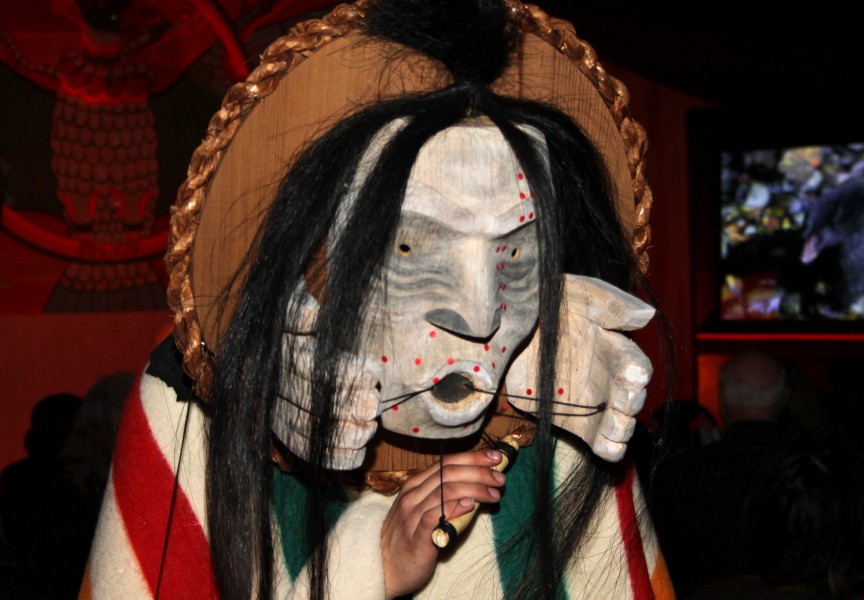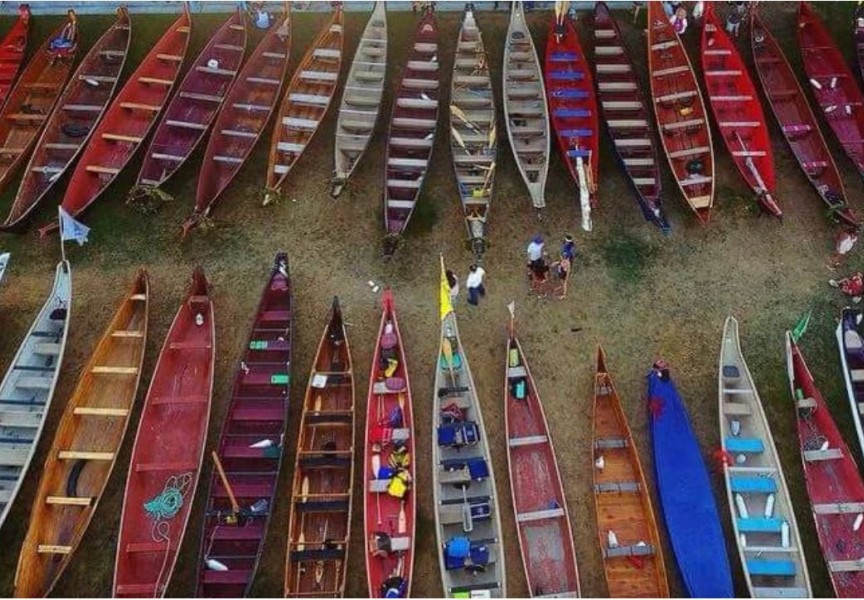An eye-opening visit to the woods and two weeks of research and e-mails to provincial forestry officials has revealed there is no policy in place and no strategy to mitigate the effects of the current Level 4 drought on First Nations’ cultural resources and species at risk.
With forest water sources rapidly drying up and no rain in sight, First Nations Wildcrafters co-owner Keith Hunter has called on the province to assist Tseshaht First Nation in monitoring the effects of the shrinking water base in a well-studied forest preserve in their traditional territory, as part of an overall climate adaption initiative.
Hunter explained that, over the past 10 years, and in partnership with the province, Tseshaht has created a Forest Stewardship Plan and a site-monitoring program within its territory. The program includes a series of environmental “indicators,” based on past experience, to predict the effects of climate and human activity on cultural assets such as traditional forest foods, and on species at risk. But we are now moving into uncharted territory, he said.
“According to [the scientist] I spoke to in Victoria, they don’t have any record of a similar season, going back to 1901,” Hunter told Ha-Shilth-Sa. “And now the meteorologists are saying we can’t expect significant rainfall until late September.”
Under the B.C. Drought Response Plan, released in 2010, a Level 4 drought triggers monitoring of stream flows for specific socio-economic factors. Those include industrial water use, requirements for fire departments and some ecological effects such as on fisheries in larger streams.
Under the plan, the province has now imposed a ban on fishing on Vancouver Island rivers and streams, based on reduced water flows.
“But when you look at the Drought Management Plan, there is nothing, when you reach Level 4 drought – nothing – about monitoring wildlife or the (secondary) fisheries in the forest.”
Hunter said it is now imperative that the province work with Vancouver Island First Nations to develop a monitoring program to deal with the unprecedented conditions in our forests and, if needed, to design affordable interventions to get water to threatened wildlife. There are 285 designated species at risk in the South Island Forest District alone.
Hunter said this quest was sparked when family members wanted to pick berries in the Tseshaht study area. On June 26, he decided to pay a visit to a particular, family-friendly patch where one would normally expect to find hundreds of huckleberry bushes loaded with berries, along with foraging bears.
“The first thing I noticed was that there were only two bushes with any berries on them. My first thought was, ‘What are the bears eating?’”
Hunter explained that “mountain bears” only forage in the forest, unlike the “river bears” that eat fish from area rivers and streams. If those berry bushes were unable to draw enough water to flower and produce berries in their usual cycle, what would the mountain bears feed on?
That led Hunter to explore the area for bear scat, and to look for some of the tiny streams and wet spots in the immediate area.
“They were bone dry. And that’s the first time in the 10 years of going into that area; there were no berries, no animals and no water. My question at that point was, ‘Where are they?’”
On his quad, Hunter travelled just over six kilometres along a deactivated forestry road, where he crossed a “water bar” that would normally carry a small overflow of water. That day, it was reduced to the barest trickle.
“I’d never seen it so small. But when I crossed that stream is when I started to see animal signs. What stood out in my mind was the intensity of it. There was more bear scat on that road corridor than I have ever seen before – for two or three kilometres,” he said. “And there was also cougar scat on the road. I have never seen bear scat and cougar scat together in a road corridor.”
And then right in the middle of the road, he found a skeletonized deer carcass. Finding a kill right out in the open is almost unheard of, he explained.
Hunter said that’s when he realized the animals were moving into a smaller and smaller area to find water, and it was causing an imbalance of predator and prey species.
Back home, he began poring through provincial forestry policy and planning information to see what contingency plans were in place to protect endangered wildlife in an extended period of drought. There aren’t any.
Turning his attention to the network of provincial scientists tasked with monitoring Island forests, he found a similar lack of local knowledge, even though drought resiliency is studied extensively in dry zones like the B.C. Interior.
“I was getting the run-around from one ecologist, who said, ‘You’re talking about what we do in other areas – but this is a rainforest. We don’t normally do this type of management in a rainforest.’
“I told him, in 2015, we’re not living in a rainforest. We’re living in a Level 4 drought forest.”
Hunter’s quest to obtain ministry assistance now appears to be gaining traction, but slowly. Thursday’s interview was interrupted by an e-mail from South Island Natural Resource District manager Mary Bauto, expressing similar concern about the local effects of the drought, but adding:
“At this time this is outside of the district mandate and as of today almost a third of our district staff are assisting on the wildfire front.”
At the same time, however, Bauto assured him that “many [Ministry] staff outside of the district are being reassigned from their normal work activities to address this as well.”
The same day, ministry official Sinclair Tedder passed along a referral to research wildlife ecologist Melissa Todd, who is currently studying drought effects in the Coast Area Research Section.
“I think she will be very interested to hear about your recent observations,” Tedder concluded.
Hunter said he has advised the ministry that the Tseshaht study will be based on traditional Tseshaht knowledge, and will rely heavily on in-house expertise. There is now a core group of Tseshaht field workers who are experienced in measuring and mapping using current technology, he said.
“We have people in the community who have been going out there their whole life, at all times of the year. They understand the typical animal behavior and where the animals are at different times of the year, what streams are typically flowing… they know the land.”
Anne Robinson, Hunter’s partner in life and in business, said circumstances demand that Tseshaht, and all First Nations members, stop working outside their traditional knowledge base and their traditional values of respect for the land. It is a matter of survival, she explained.
“We are being reminded how dependent we are on the land and waters. An elder once said humans are the most pitiful creatures on the earth because humans depend on everything else to live,” Robinson said. “As First Nations, we have a responsibility to the land, so we have some hard questions to ask ourselves.”
But Robinson said she is confident that the answers will come from within the First Nations community.
“We come from brilliant people, who were well-balanced and well-versed in what we call the food chain… understanding life and how to survive in a world that didn’t have running water or any of those things. We come from those kinds of people.”
It is also a time to extend our understanding of the traditional Nuu-chah-nulth concept of hishukish ts’awalk, Robinson said.
“It is not enough just to recognize that everything is connected. There is a responsibility that goes with it,” she said.
Along with their traditional knowledge, Hunter said most of the Tseshaht field workers also have extensive firefighting experience, which means they will be able to operate safely under the dry conditions.
But the province has the experts and the hardware to put together a bigger picture, he said, because if this year is the “new normal,” as some experts are predicting, we must prepare to adapt to a changing climate.
“We can’t stop the drought, but we can decide, ‘What are we going to learn from it and how are we going to adapt to it?’ If this is an ‘extreme,’ we need to know the effect of it. And if there is anything we can do, we have to try.”






